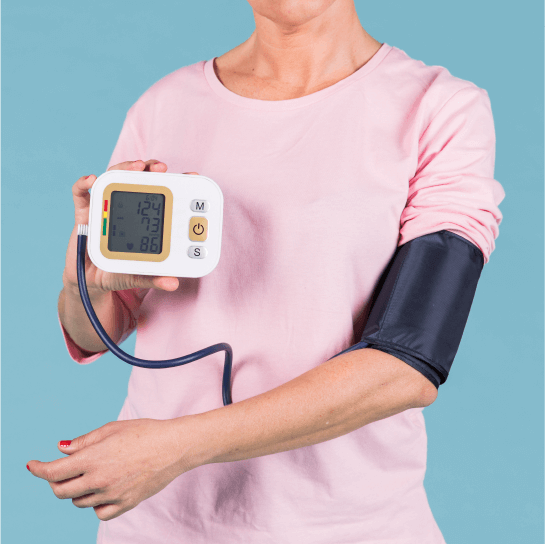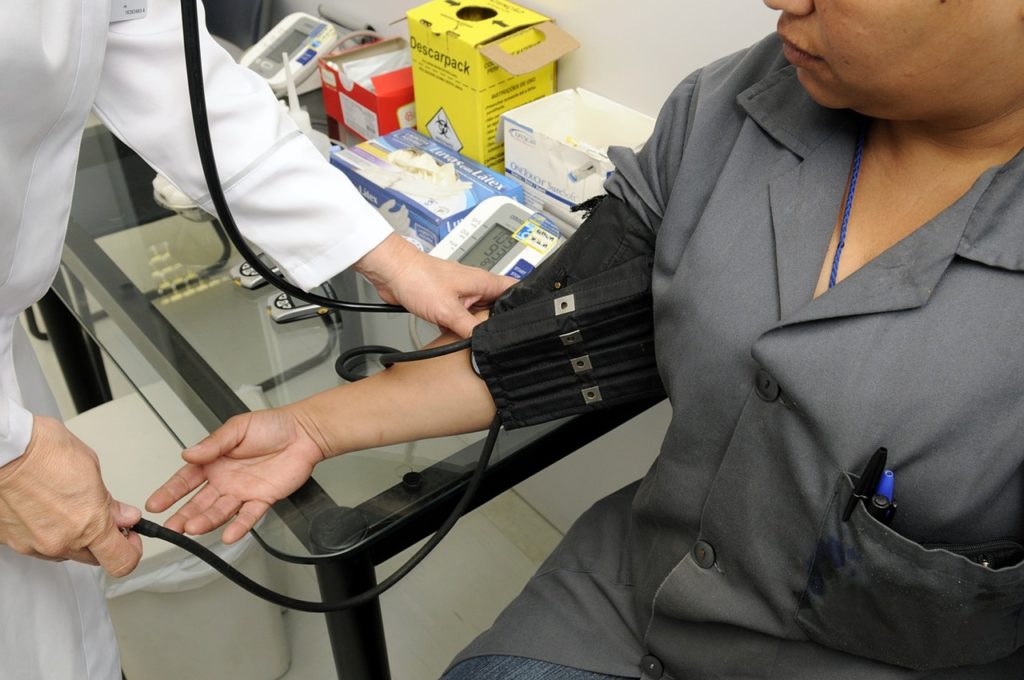The Benefits of the ABPM Examination for Accurate Blood Pressure Assessment
Ambulatory Blood Pressure Monitoring (ABPM) supplies a sophisticated method to examining high blood pressure. This approach offers continuous, 24-hour data, catching fluctuations that take place throughout everyday activities and sleep. Such in-depth monitoring not only improves accuracy however additionally discloses important patterns, helping to distinguish between true hypertension and problems like white-coat disorder. Understanding these subtleties could result in much more effective therapy methods. What ramifications might this have for client treatment and administration?
What Is Ambulatory Blood Pressure Monitoring (ABPM)?
Ambulatory Blood Pressure Monitoring (ABPM) is a technique that permits for continual high blood pressure analysis over a 24-hour duration, providing a substantial photo of a person's blood stress variations. ABPM test in Bangalore. This strategy utilizes a mobile gadget that instantly gauges high blood pressure at normal intervals throughout the day and evening. As people go regarding their day-to-day tasks, the tool captures data showing their blood stress variants during different times and circumstances, including sleep and physical exertion.ABPM is especially valuable for identifying conditions such as high blood pressure, as it can compare real high blood pressure and white-coat syndrome, where patients exhibit elevated readings in professional settings however not in their daily lives. By offering a comprehensive sight of blood pressure changes, ABPM help doctor in making informed decisions relating to diagnosis and therapy. Furthermore, it enhances the understanding of high blood pressure patterns, allowing customized administration approaches for people
Constant Monitoring for Improved Accuracy
Constant monitoring of blood stress through ABPM substantially enhances the accuracy of analyses compared to traditional techniques. This strategy permits for blood pressure dimensions at routine periods throughout the night and day, recording variations that may happen due to day-to-day activities, stress and anxiety, or other variables. Unlike single analyses taken during a facility see, ABPM offers a complete profile of a patient's high blood pressure over a 24-hour period.This constant evaluation results in much more trusted data, enabling medical care service providers to identify patterns and potential concerns that may go unnoticed with sporadic dimensions. It additionally assists compare real high blood pressure and white-coat disorder, where clients show elevated readings because of anxiousness in a scientific setup. By leveraging the advantages of constant monitoring, ABPM substantially boosts medical diagnosis and therapy techniques, inevitably adding to better individual outcomes and more customized medical care techniques.
Understanding Blood Pressure Variability
Blood pressure irregularity describes the variations in blood pressure analyses that can occur in time due to numerous aspects, including exercise, tension, and body clocks. This irregularity is substantial as it provides understandings into an individual's cardiovascular health. ABPM test in Bangalore. For example, aspects such as exercise can briefly raise high blood pressure, while relaxation may result in a decline. Furthermore, the body's natural rhythms can trigger high blood pressure to vary throughout the day, commonly being lower at night and higher throughout waking hours. High levels of variability have been related to raised risks of cardiovascular events, making it essential for healthcare experts to monitor these changes. Comprehending blood pressure variability assists in customizing therapy plans and evaluating total health and wellness. Exact assessment via approaches like Ambulatory High blood pressure Monitoring (ABPM) can capture these variations, allowing for a more comprehensive examination of an individual's blood stress account
Determining White Coat High Blood Pressure
White coat high blood pressure, usually described as white coat syndrome, is characterized by raised high blood pressure readings in medical setups because of anxiousness or anxiety. Identifying its signs and symptoms and indications is essential for accurate medical diagnosis, as misconception can bring about unnecessary treatments. Recognizing this sensation is vital for effective blood stress management and client treatment.
Recognizing White Coat Disorder
Numerous clients exhibit elevated blood stress readings in scientific settings, this phenomenon, recognized as white coat hypertension, can cover the real state of their cardio health and wellness. This problem occurs when people experience anxiety or stress and anxiety throughout clinical sees, leading to short-term spikes in blood pressure. Therefore, medical care carriers might misunderstand these analyses as a measure of hypertension. White layer disorder highlights the value of precise high blood pressure evaluation, as depending solely on in-office measurements can result in unnecessary therapies or misunderstandings regarding a person's wellness. Understanding this syndrome is important for clinicians, as it underscores the need for alternative monitoring methods, such as ambulatory high blood pressure monitoring (ABPM), to get a more exact representation of a person's blood pressure levels.
Signs and symptoms and Indicators
Many individuals might experience specific symptoms that recommend the existence of white layer high blood pressure. These signs and symptoms can consist of raised blood stress readings throughout medical brows through, accompanied by feelings of stress and anxiety or anxiousness in a professional environment. Patients often report a fast heartbeat or sweating when communicating with healthcare professionals, which might worsen their high blood pressure degrees. In addition, some people might discover a disparity in between their in-office high blood pressure readings and those taken in the house, where they feel extra relaxed. Recognizing these symptoms is important, as they can indicate that stress and anxiety or anxiousness related to medical setups is affecting their blood pressure. Understanding these indications can help in recognizing white layer hypertension and determining the need for more assessment.

Value of Accurate Diagnosis
Accurately identifying white coat high blood pressure is important for reliable high blood pressure administration. This problem occurs when a patient displays elevated high blood pressure analyses in a scientific setup because of anxiousness or stress and anxiety, while normal analyses are taped in an extra loosened up atmosphere. Misdiagnosis can result in unneeded treatment, subjecting people to possible medication negative effects without any genuine health and wellness advantage. The usage of ambulatory blood stress monitoring (ABPM) is necessary in identifying real hypertension from white coat syndrome. ABPM provides continual high blood pressure measurements over 24 hours, enabling for a comprehensive analysis that can aid healthcare providers make informed choices. Inevitably, accurate identification of white coat hypertension assurances clients receive ideal care and prevents the risks of mismanagement.
Examining Nocturnal Blood Pressure Patterns
Reviewing nighttime blood stress patterns is essential for understanding a person's total cardio health. Nighttime measurements can disclose substantial fluctuations in blood stress, which may suggest high blood pressure variability. In addition, these patterns are carefully associated with heart health, highlighting the significance of continual monitoring beyond conventional workplace gos to.
Value of Evening Measurements

Nighttime blood stress dimensions are commonly important for comprehending a person's general cardiovascular health and wellness. These readings provide important insights into exactly how high blood pressure behaves throughout sleep, which can differ noticeably from daytime degrees. Checking nocturnal blood stress enables the recognition of unusual patterns, such as non-dipping or reverse-dipping sensations, which might indicate an enhanced risk for cardio occasions. In enhancement, nighttime analyses can help evaluate the performance of antihypertensive treatments, making sure that medicines are suitably handled. By catching blood stress changes throughout the evening, health care specialists can establish much more personalized therapy strategies, inevitably enhancing client end results and lowering the possibility of lasting difficulties related to hypertension. This highlights the relevance of extensive blood pressure examination throughout the day and evening.
Identifying High Blood Pressure Irregularity
How can the irregularity of nighttime high blood pressure patterns inform hypertension administration? The evaluation of nighttime high blood pressure through the Ambulatory Blood Pressure Monitoring (ABPM) examination discloses important fluctuations that usually go undetected in conventional measurements. These patterns can suggest the presence of "non-dipping" hypertension, where blood stress falls short to go down during sleep, recommending a raised cardio threat. By recognizing such irregularity, doctor can customize interventions more properly, readjusting therapy strategies based on the individual's details nocturnal high blood pressure behavior. Recognizing these patterns additionally aids in examining the click here to read efficacy of antihypertensive medicines, guaranteeing get more that patients attain perfect blood pressure control throughout the day and evening. Consequently, nocturnal analysis becomes essential in comprehensive high blood pressure monitoring.
Correlation With Heart Health And Wellness
Understanding nighttime blood stress patterns not only help in high blood pressure monitoring however additionally has significant ramifications for heart health. Research shows that irregular nighttime high blood pressure readings, such as non-dipping or reverse dipping patterns, are related to increased cardio threats. Throughout rest, high blood pressure commonly decreases, a phenomenon essential for cardiovascular healing. When this decrease is missing, it might signify underlying concerns such as autonomic disorder or increased arterial rigidity. In addition, people with raised nighttime high blood pressure are at an increased risk for heart strike and stroke. Using ambulatory blood pressure monitoring (ABPM) to assess these nighttime patterns can offer necessary insights, allowing for customized treatments that much better safeguard heart wellness and boost total patient outcomes.
Tailoring Therapy Plans Based on Real-Life Information
Customizing therapy plans based on real-life information includes leveraging continuous high blood pressure checking to develop tailored medical care strategies. The Ambulatory Blood Pressure Monitoring (ABPM) examination provides a detailed account of a client's blood stress variants throughout everyday activities. This in-depth data permits doctor to determine patterns that could be ignored in conventional office visits.By assessing fluctuations in high blood pressure throughout different times and problems, medical professionals can change medications, does, and way of life recommendations to far better fit private client requirements. This customized approach not just improves the efficiency of treatment strategies but also lowers the probability of unfavorable responses to medications.Furthermore, real-life information can reveal possible triggers for high blood pressure, causing proactive treatments. Overall, customizing therapy based on continual monitoring fosters a much more reliable, patient-centered technique to handling hypertension and boosting lasting health and wellness results.
Boosted Client Conformity and Interaction
While conventional monitoring methods may limit individual participation, using Ambulatory High blood pressure Monitoring (ABPM) substantially improves patient conformity and engagement in their very own health care. By permitting individuals to wear a mobile tool that tape-records blood stress over 24 hr, ABPM encourages people to take an energetic function in their health administration. This continuous monitoring supplies an extra detailed view of blood stress variations, encouraging clients to understand their condition better.Moreover, ABPM promotes a setting where individuals can discuss their readings with doctor much more meaningfully, bring about informed decision-making. People become a lot more bought adhering to prescribed treatments and lifestyle alterations when they see real-time data reflecting their health status. Consequently, the shift from easy individual to energetic collaborator not only enhances compliance but additionally enhances overall health end results, making ABPM an important tool in promoting client engagement in hypertension administration.
Regularly Asked Questions
The length of time Does an ABPM Examination Normally Last?
The ABPM examination usually lasts 24 hours. Throughout this duration, it measures blood stress at regular periods, original site providing a detailed evaluation of a person's blood pressure patterns throughout their everyday activities and sleep.
Exist Any Dangers Related To ABPM Screening?

Can ABPM Be Made Use Of for Kids and Teenagers?
ABPM can be used for children and teens, supplying vital understandings into their blood pressure patterns. Nonetheless, proper tools sizing and interpretation by experienced experts are crucial to guarantee exact assessments and prevent misdiagnosis.
How Is ABPM Different From Conventional Blood Pressure Monitoring?
ABPM varies from standard monitoring by providing constant blood stress analyses over 24-hour, capturing variants during everyday tasks and sleep, whereas conventional approaches typically count on single dimensions, potentially missing critical changes in high blood pressure.
What Should Patients Do During the ABPM Examination?
Throughout the ABPM examination, clients need to maintain typical tasks while staying clear of hefty exercise, excessive high levels of caffeine, and cigarette smoking. They have to also keep their arm still when the gadget pumps up, ensuring precise analyses throughout the monitoring duration.